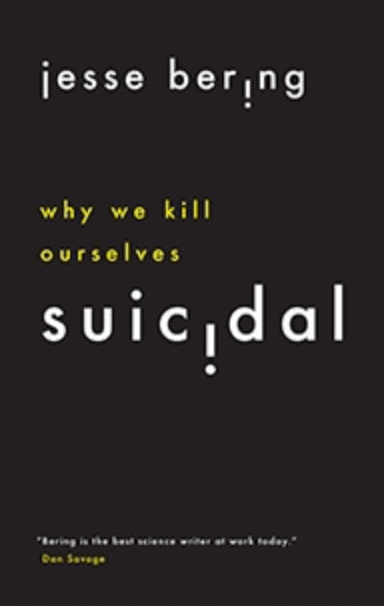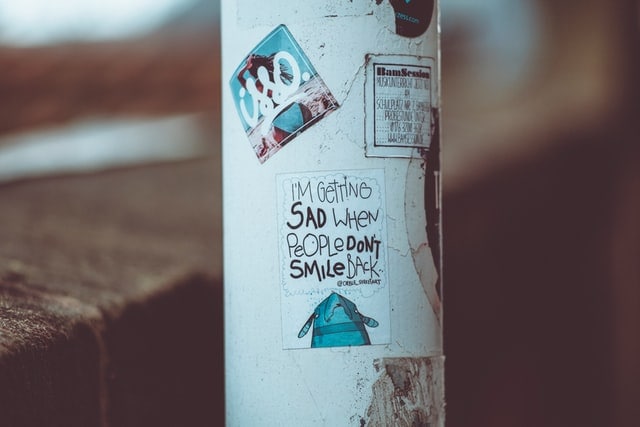
Bering’s eclectic publication is divided into eight chapters. In Chapter 1, we learn about the author’s personal journey and his struggles with suicidal feelings which ultimately motivated him to write this book. An animal lover, Bering explores whether animals commit suicide in Chapter 2. We read, inter alia, of vast numbers of sheep jumping to their death, of leaping lemmings, of tests on scorpions to determine whether they end their lives before they are killed (they don’t), or of Bering’s cat who got stuck in the crown of a tree. The author uses examples, anecdotes, stories, myths, and vignettes. This creates an engaging, but not always streamlined reading experience. Ultimately, Bering concludes that while we cannot know, it is likely that animals do not commit suicide because they do not possess a “theory of mind” – that unique ability humans have to develop theoretical constructs about the “inside of someone else’s head” to (try to) “make sense of their behavior” (28). Suicide may then be “a consequence of our species’ emotional Achilles’ heel” (37).
Suicide may then be “a consequence of our species’ emotional Achilles’ heel” (37).
In Chapter 3, Bering examines whether (and to which extent) suicide could be considered pathological – a product of a diseased mind or a failed life – as opposed to the sign of an adaptive mind. The author guides us through some of the core debates on suicide such as evolutionary models, the bargaining hypothesis, altruistic suicide and, above all, the key role social anxiety, emotions and worries play in suicide. The book’s strength resides in offering another lens through which to examine those theories which suggest that suicide results from a “derangement of the eusocial instinct” which makes people assume that their deaths are more valuable than their lives (see e.g., Joiner 2016: 237; 71). Bering shows how intense and unbearable the pain which can result from worrying about what others think of us can become. He also suggests that we are all potentially suicidal and that assuming that some of us are “entirely safe from ever dying at our own hands is a grave mistake” (92).
In Chapter 4, Bering introduces the reader to Roy Baumeister’s stage-theory model of suicide. Suicidal thinking, we learn, is precipitated by events that fall short of high standards and expectations (Stage 1). People then attribute these unfortunate events to the self and begin blaming themselves (Stage 2). In a third stage people turn inward and unto themselves. They become absorbed by things they dislike about themselves. Suicide notes, we learn, are an indicator of this heightened, negative self-awareness. In these, first-person singular pronouns such as “I” and “me” are frequently used, whereas inclusive pronouns like “us” and “we” only appear rarely. If others are addressed at all, then it is usually as “being cut off, distant, separate, not understanding, or opposed (103)”.During stage four, ongoing negative affect—so called psychache—becomes so unbearable that the loss of consciousness through death is what makes the idea of committing suicide appealing (108). The physical pain that may accompany suicide is no longer a deterrent for it is considered to be more tolerable than psychological hurt. Stage five constitutes cognitive deconstruction (see Vallacher & Wegner 1987) where the world becomes increasingly black and white and where the perspective on time is affected. For suicidal people “time crawls.” Thinking of the past and of what the future may hold causes such pain that suicidal people try to focus on the here and now in an unemotional way. This then leads to disinhibition, the sixth and final stage where “those who are intent on taking their lives (…) have entered a mode of dichotomous thinking characterized by all- or- nothing reasoning”(113).
In chapter 5 —which is Bering’s strongest chapter— he analyses the diaries of seventeen-year-old Victoria (“Vic”) McLeod leading up to her suicide. Here, we can see Roy Baumeister’s escape stages unfolding. This chapter shows most clearly how personal this book is to Bering. Not only does he reject distance to the people he writes about or the scholars he engages with (he calls most of them by their first names), but, through her diaries, he builds a relationship with Vic and imagines that had she not left this world their paths would have crossed.
This bonding with like-minded strangers is also an undercurrent of Chapter 6 in which Bering considers the influence of the internet on suicide. On the one hand, social and other media enables open conversations and can help with suicide prevention, (the “Papageno effect”, see Niederkrotenthaler et al. 2010; 169-170). On the other hand, argues Bering: “with access to intimate strangers willing to die with us as suicide partners, a worldwide voyeuristic audience perversely ready to watch us do it, and detailed information about how to complete the act ‘successfully’ at our fingertips, the internet has clearly troubled the already troubled waters of suicide prevention.’’ (165)
Chapter 7 takes us back to (other) animals and Bering notes that it may be helpful to consider that we are all animals because it confronts us with our own mortality, something which paradoxically can make us value life more. This chapter turns to the influence of religion on suicide (which is overall protective), asks what happens after death, and how people cope with the passing of others. In this chapter, Bering’s opinionated, sometimes judgemental writing style appears most clearly. He argues for instance that people believe in the survival of consciousness after death by default . This is because we “feel, emotionally, what we’d expect our future selves would feel under those imagined conditions” (185). However, Bering uncompromisingly touts the idea that there is an afterlife as a rejection of modern brain science.
Rather than offering a new theory of suicide, this book offers a new angle: the personal.
Rather than offering a new theory of suicide, this book offers a new angle: the personal. The author not only wrote himself into the book, in many ways, he is the book. Bering is convinced that the scientific understanding of the urge to commit suicide can help save people’s lives, “at least in the short term”. He says: ‘’I want people to be able to recognize when they’re under suicide’s hypnotic spell and to wait it out long enough for that spell to wear off” (17). This product of “intellectualising a personal problem” (16) he provides the reader with is the result of both his conviction and a defence mechanism for himself and others. In his final chapter (chapter 8) Bering urges us to remain “acutely aware that we are social animals…whose mental machinery has evolved to be so finely attuned to the stuff of other people’s thoughts that sometimes our very existence hangs in the balance of what we think others think of us” (235). Additionally, we should focus on building a “community of like-minded allies who value and appreciate us” (235). Knowledge and community are then the two deterrents Bering proposes against suicide.
The content of the book is driven by Bering’s own scholarly interests (mostly from the broad field of social cognition) and by his personal priorities; by all that which helped him “see more clearly”(7). The book interweaves disciplinary, literary, historical, media, personal and sensationalist sources. In some parts, the resulting amalgam brilliantly succeeds at providing both an accessible and an earnest account. In others we wonder how certain passages advance the argument—like when the author contemplates murdering a field mouse which made a home in his pantry—or they feel uncomfortable—like when he writes in a nonchalant way about other people’s suicides (see also McGinnis, 2019). This style and tone made me wonder which consequences this book may have for people with suicidal feelings. Bering clearly cares about his readers and offers trigger warnings. At the same time, his tone can shift quickly from conversational and empathetic to mocking or cold. It is important to note that one of the main reasons why Bering wrote the book, his belief that “knowledge of others’ suicides—is an important line of defence against suicide contagion” (148)—also makes it a tough read for it is spiked with examples (sometimes detailed and graphic) of other people’s suicides.
The book interweaves disciplinary, literary, historical, media, personal and sensationalist sources (…) which at times briliantly succeeds at providing both an accessible and an earnest account.
In a nutshell Bering wanted to create an academic self-help book for himself, like-minded individuals, loved ones and interested parties. A mosaic, on the pages of which all those who wonder why it is that some people consider committing suicide or have ended their lives in such a way may find possible answers about motives, about inner life-worlds and about “how we, as a society, think about suicide”. (16-17) The result is a book which is unparalleled in content, but which must be approached with caution especially for readers who are themselves struggling with suicidal feelings.
Bering, J. (2018). Suicidal: Why we kill ourselves. University of Chicago Press.
Featured Image: Photo by Daniel Mačura on Unsplash
Other image: Photo by Markus Spiske on Unsplash










